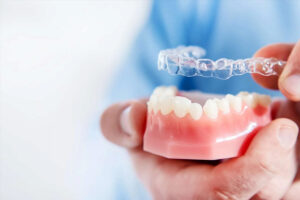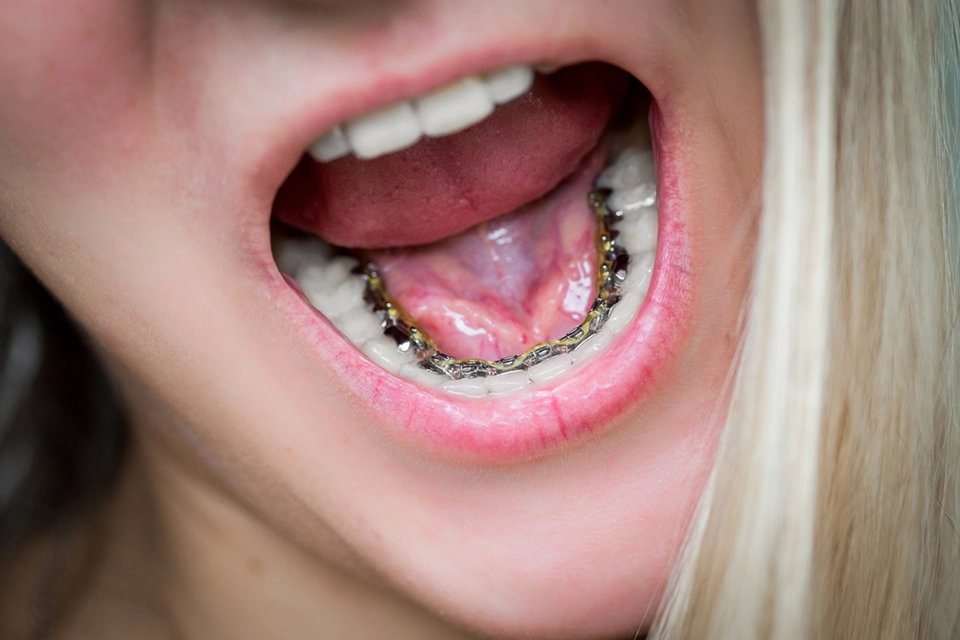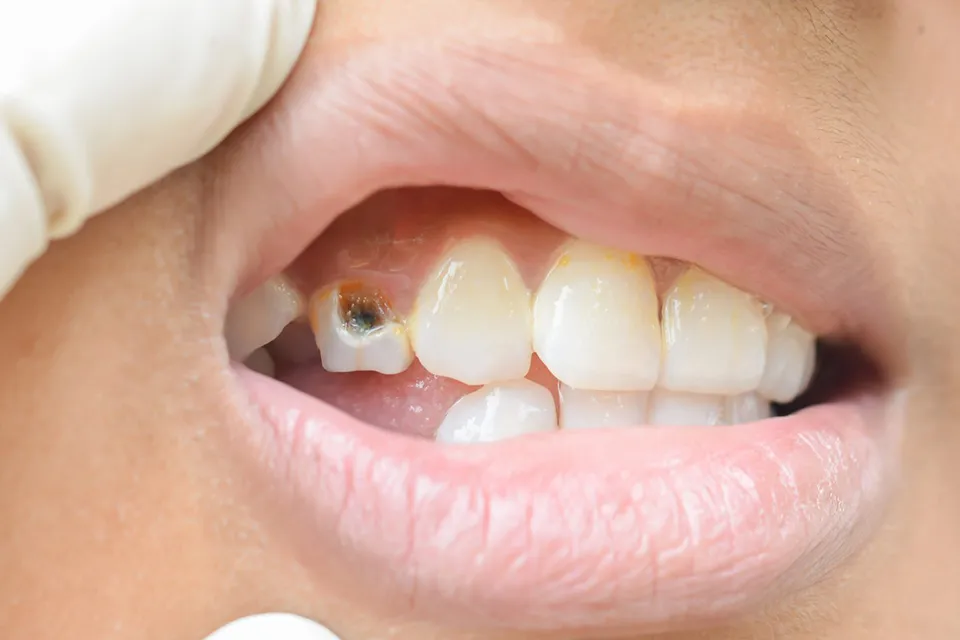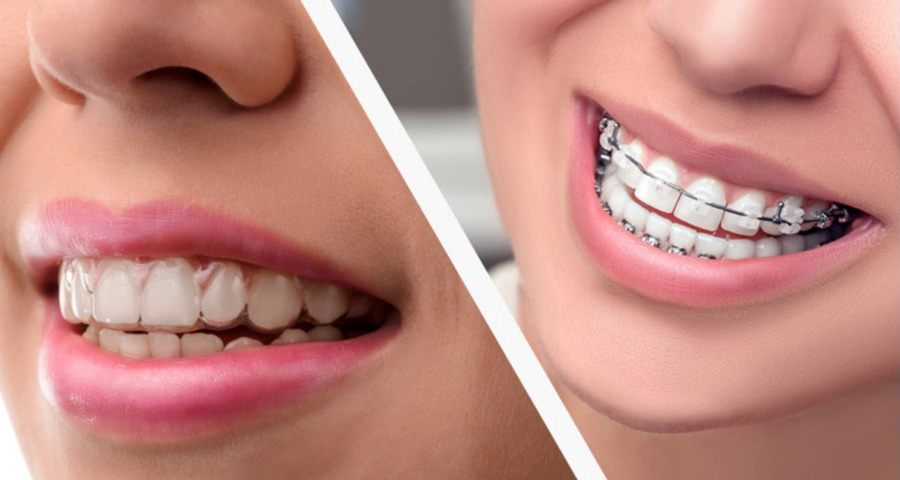Traditional braces are made of wire, metal and brackets. They do the job for sure, but they also get in the way of a beautiful smile. Invisible braces do the same work as traditional braces, but with one beautiful exception: you can’t see them. Invisible braces are made from clear, medical-grade plastic. They’re designed to shape the teeth but not to get in the way of your lovely smile.
Invisible braces work very differently from traditional braces, and they can cost a little more as well. However, the lovely aesthetics make invisible braces worthwhile for those who want to correct their tooth alignment without seeing a mouth full of metal every time they smile in the mirror. In this article, we’ll discuss invisible braces including the best age for getting them, who needs them, best practices, what kind of dentist performs the treatment, cost, financing & more.
How Much Do Clear Braces Cost?
Clear braces can cost anywhere from $1,200 to $8,000, depending on the brand, length of treatment and other details. To narrow down the cost, consult with your orthodontist to create a treatment plan and get an estimate.
Who Needs Invisible Braces?
Patients get invisible braces (also called clear aligners) when their teeth are misaligned, crooked or crowded.
Often, patients who need clear braces have a hard time flossing between their teeth. They may also find that their mouth won’t close properly when they’re not talking or chewing. Sometimes people who need invisible braces have a hard time pronouncing certain words, or their jaw may hurt when they chew.
What’s the Best Age for Getting Invisible Braces?
Invisible dental braces works for children of many ages. While the youngest that children can get invisible braces is around age 7, some parents choose to get their child invisible braces when they’re older simply because younger children have a hard time forcing themselves to wear invisible braces for long periods. It’s typical for children to get invisible braces when they’re between 9 and 14 years old. Children can get dental braces when they’re older, however. Even adults can get clear aligners.
What Are the Requirements for Getting Invisible Braces?
Before a patient is able to get clear aligners for their teeth, they must first have good oral hygiene. Young children often struggle with maintaining good oral hygiene. There are many reasons for this problem.
For example: it’s difficult for children who have just learned how to brush their teeth to brush their teeth thoroughly, and many children don’t brush their teeth for long enough. You can help ensure that your child’s teeth will be ready for aligners by teaching them good oral hygiene skills.
Teach your child to brush their teeth for a full two minutes by either getting them an electric toothbrush that will time their brushing, or by teaching your child to brush their teeth to a song that is two minutes long.
Children are also prone to getting cavities. If your child has cavities, they will need to have this problem resolved before they can be a good candidate for clear braces. Control what your child eats and keep them away from sugar, to prevent them from getting cavities.
Invisible Braces Best Practices
Care and maintenance. Caring for invisible braces is relatively easy. Clear aligners spend most of their time in the mouth, but they should be cleaned at least once per day with cold water and mild, non-abrasive soap.
Invisalign braces should not be cleaned with toothpaste or anything that is scratchy – this could do damage to the surface and may cause staining in the future. In addition, never use hot water to clean your Invisalign braces, as hot water can damage the plastic.
How often they should be worn. The dentist will tell your child how many hours per day they should wear their braces in order to be effective. If your child doesn’t wear the braces frequently enough, the clear braces will not be effective. If your child is having a hard time wearing their braces frequently enough, start tracking how often they’re in your child’s mouth. Establish a system for reminding your child.
What Kind of Dentist Helps with Invisible Braces?
Children may get a referral from their dentist to see an orthodontist when they are as young as seven. If your child’s dentist has recommended that your child see an orthodontist, find a professional that has a history of working with children to help them obtain clear aligners. Not all children are a good candidate for aligners – the dentist will help you decide if this is the right dental tool for your child.

Invisible Braces Financing
Financing is available for invisible braces. Your dentist or orthodontist may offer in-house financing to help spread out payments and reduce the impact of cost of invisible braces. In addition, you may also get a personal loan, either from a loan company that specializes in making medical loans, or from a personal credit card.
When shopping around for a loan, look for companies that offer good financing and repayment terms. Consider multiple lenders before settling on the right lender for your needs.
Treatment Journey
Before
Before your child gets clear braces, the orthodontist will assess your child’s teeth to ensure that clear braces would be the right dental product for their needs. The orthodontist will ensure that clear braces will actually correct your child’s problem, and that clear braces will do the work efficiently.
Your child’s orthodontist will also assess the health of your child’s teeth to ensure that they don’t have cavities or dental diseases that need to be treated before treating their tooth alignment problems.
During
The orthodontist will have the first set of clear aligners made to fit in your child’s mouth. The aligners will fit snugly at first, because they’ll be shaping your child’s teeth.
As your child’s teeth adjust to the aligners, the aligners will feel less snug. Your child’s orthodontist will give your child a new set of aligners periodically, to continue shaping your child’s teeth.
After
After your child has worn aligners for the recommended period of time, the orthodontist may recommend that your child wear retainers for a while to help their teeth stay in proper position. The orthodontist will tell you when the retainer no longer needs to be worn.
Invisible Braces Frequently Asked Questions
Q: What are invisible braces?
A: Invisible braces are braces made from clear medical grade plastic. These removable braces fit over your teeth.
Q: Will wearing invisible aligners affect my speech?
A: Some people who wear Invisalign and other brands of clear braces will lisp when they speak with their braces. However, this lisp will go away after about a week of wear.
Q: Are invisible braces as effective as traditional braces?
A: For those who qualify for clear aligners, aligners are as effective as traditional braces. Your orthodontist will let you know if you qualify for aligners for your teeth.
Q: Are clear braces painful?
A: Clear braces are not painful, but they can cause discomfort, especially when the set of aligners is new.
Q: How often should you wear invisible braces?
A: The orthodontist will likely recommend that your child wear invisible braces for 20 to 22 hours per day. Find out from your child’s orthodontist how much they need to be wearing their clear aligners in order for them to be effective.
Q: Will insurance cover Invisalign?
A: Many insurance policies will cover Invisalign and other clear braces.
Pros & Cons of Invisible Braces
Pros
Invisible braces
- are removable for meals and for cleaning purposes, which makes them easier to maintain than traditional braces
- aren’t visible, so they have less impact on your confidence and on your smile.
- can do the same work as traditional braces.
- can’t cut the inside of your mouth in the same way as traditional braces.
Cons
- Invisible braces won’t work for everyone, so find out from your orthodontist if invisible braces are for you.
Ready for Invisible Braces?
If your child has crooked teeth, is having a hard time pronouncing certain sounds, or if they struggle with tooth misalignment, then it may be that invisible braces are the right choice for them.
If your child is ready to have invisible braces installed on their teeth, then now is the time to talk to your dentistry professional. Call your orthodontist to learn more about how invisible braces work, and whether they’re right for your child.
Call in to make an appointment for invisible braces in Houston, Texas, or make your child’s appointment through our website.







